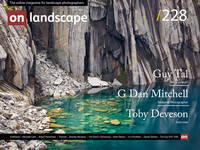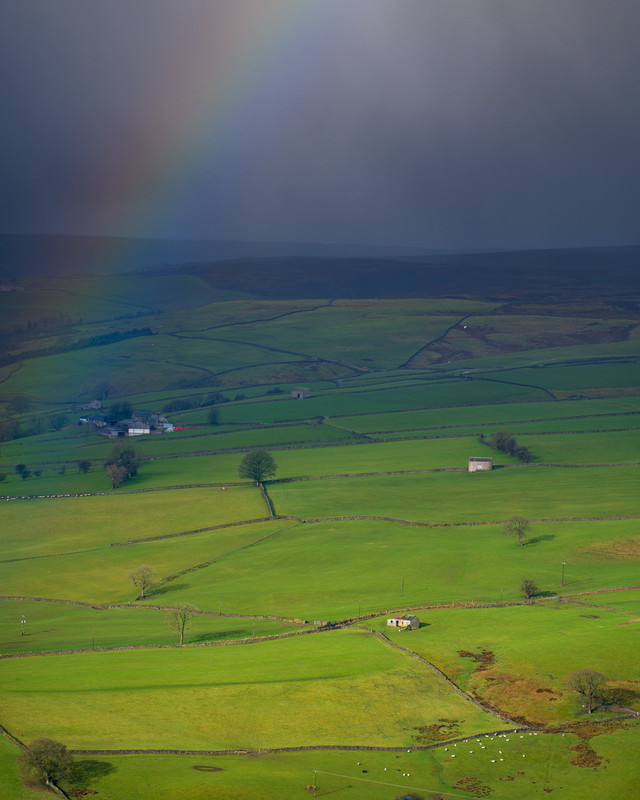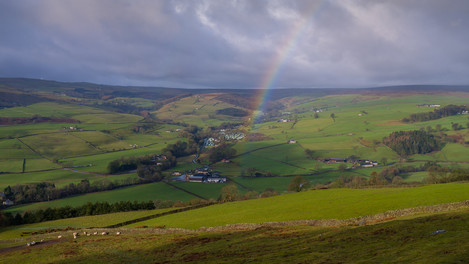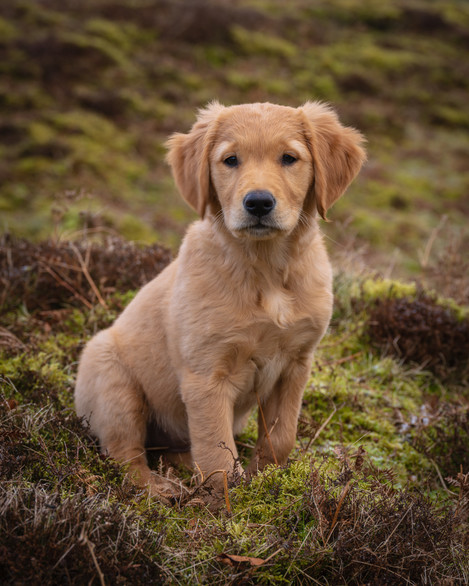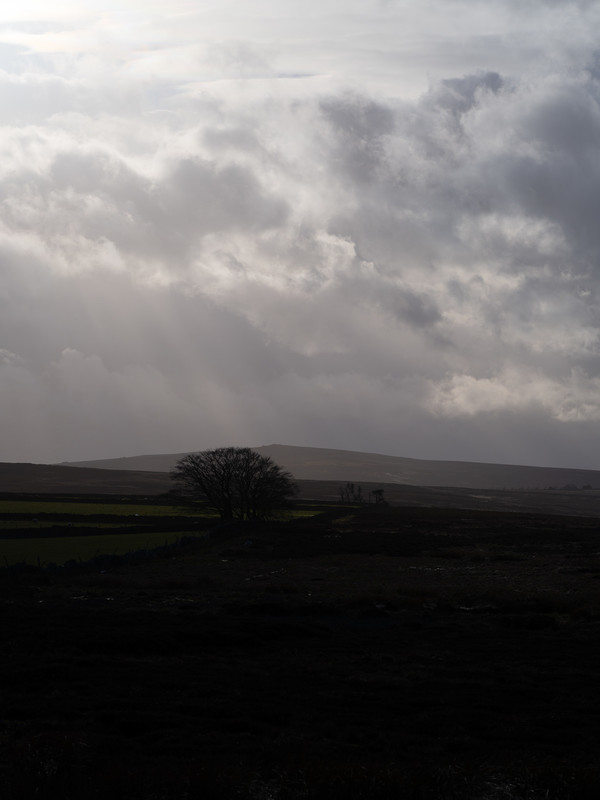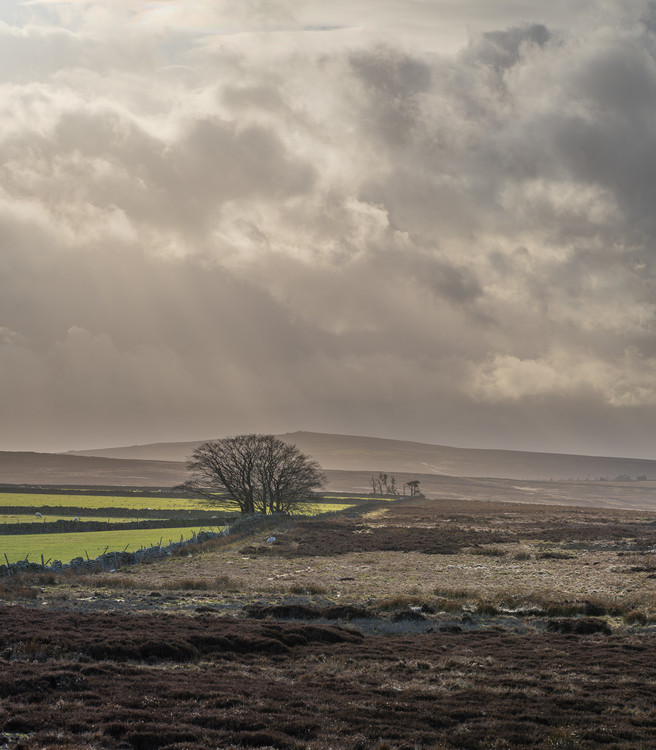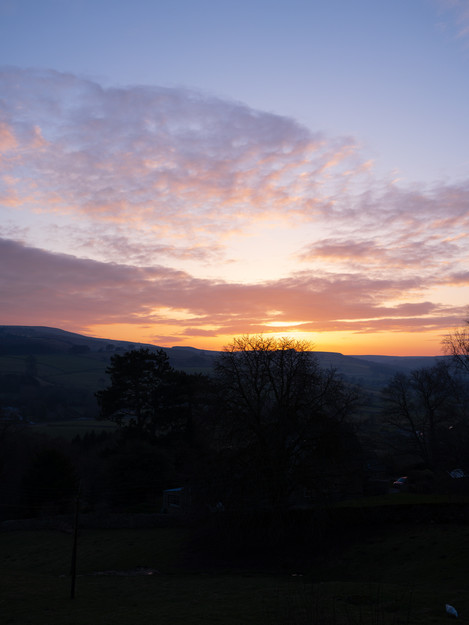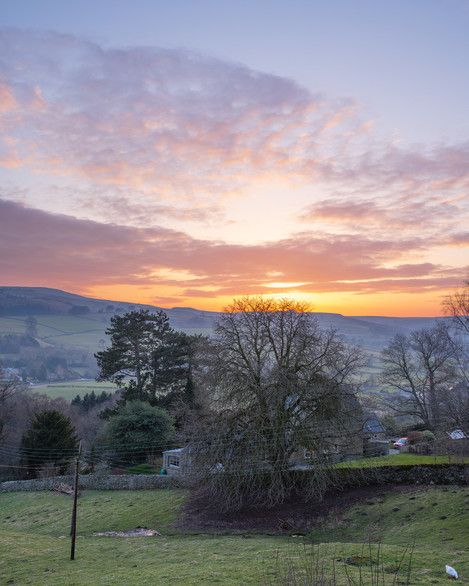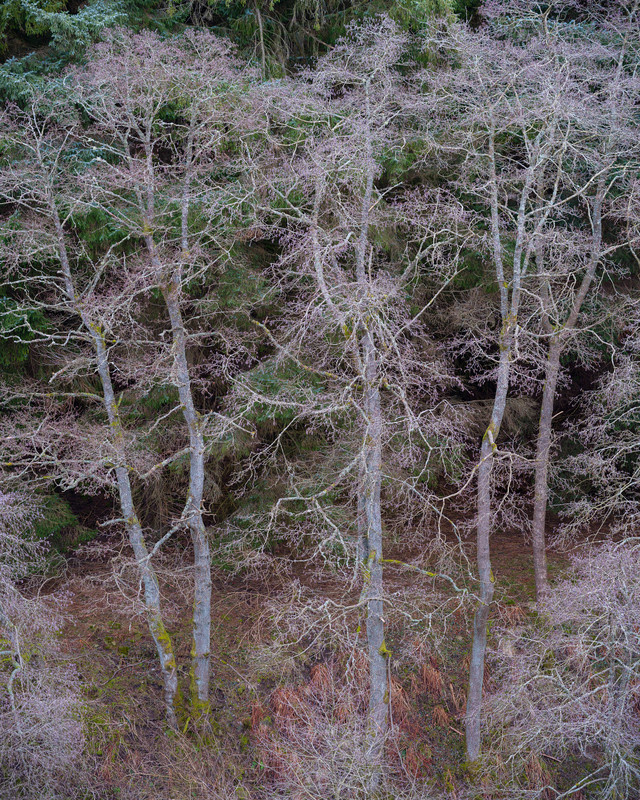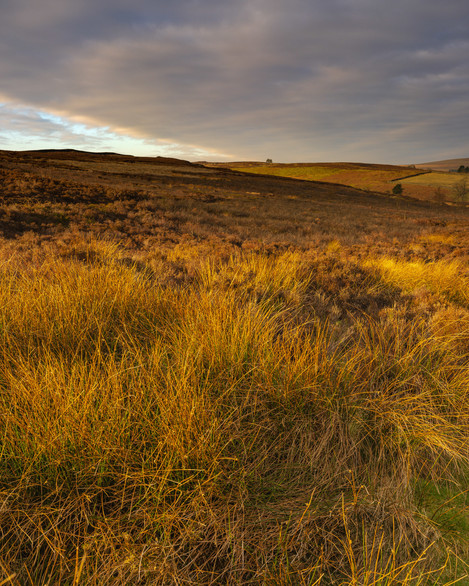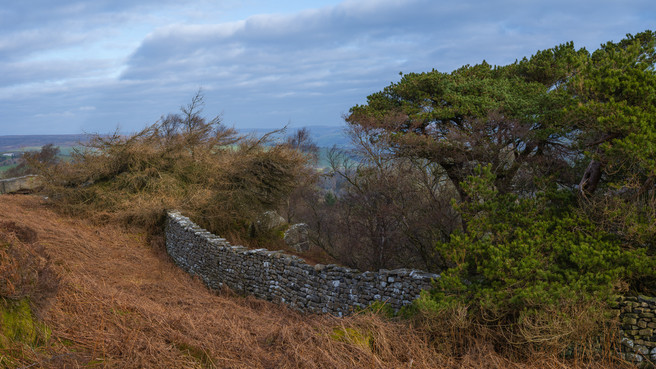The Fuji GFX 100S
Well… clearly no camera is ever perfect but the compromises that had to be made in choices in features that suit the requirements of the dedicated landscape photographer seem to have reduced significantly with the introduction of the Fujifilm GFX 100S.
For my own journey after Large Format 5x4 film I predominantly used Nikon DSLR cameras with diversions to explore the benefits of mirrorless with the original Sony A7R I and II and medium format with the Pentax 645Z. Each of these were exciting cameras in their own right and capable of fantastic output but all had issues that ultimately had not been solved as well as the Nikon D850. Nikon’s mirrorless introduction with the Z7 was the best mirrorless I had used and coupled with the 24-70mm was more capable than the D850 equivalent and so very packable too.
Roll forward to December 2019 and several friends had picked up either the Fujifilm 50S or 50R and after some exhaustive side by side tests, I concluded that the Fuji medium format system would better suit my needs. Firstly, coming from 5x4 I nearly always crop to this format and take a lot of portrait oriented landscapes, the 3:2 format is so poor for this and the 4:3 format of the Fuji is a much better starting place. Secondly, the Fuji 50 files are so crisp giving apparent high levels of detail and sharpness principally due to the microlens design on the sensor, they print beautifully especially on matt papers. Fuji glass is universally excellent typically resolving well corner to corner. It was a tough decision moving away from Nikon which I have been using for 40 years but the Z system was just going to be too slow to fill out. In use, I have found the 50R to be excellent but it is not perfect.
I enjoyed quite a long spell with the Pentax 645Z which produced beautiful files but was a large and unnecessarily bulky option. The 50MP chip was very good at shadow detail but struggled with bright highlights especially in yellow and green (e.g. backlit Spring leaves or Autumn colour) where even underexposing and careful processing left little room to manipulate the files before breaking down. Shadow contrast and integrity is also a big difference. This has not been a problem with files from the Nikon or Sony in my experience. This difficulty is inherited to some extent by the 50S/R and is perhaps unsurprising for a relatively old design, it is not Back Side Illuminated and does not have gapless microlenses which bring benefits seen in cameras from the other manufacturers and what I was used to seeing from the Nikons.
Prior to the introduction of the 100S you had the option of excellent 50R/S which met the format and size criteria but needing careful management of certain highlights and artefacts from the sensor design OR modern sensors in right sized bodies but without the size and format advantage of the Fuji. The Fujifilm 100 had addressed many of these things but was not on the radar for most Landscape photographers because of its size (and cost). Many of us have been waiting for the 100S with eager anticipation as a marriage of modern FF sensor technology and physical camera size with the Fuji ‘sauce’ and delicious MF sensor.
March 2021….
I was fortunate and very grateful to get one of the first batches of 100S cameras from Alister at FFordes and have had enough time to form my own initial views of whether it indeed meets the headline.
Before I give my thoughts it is important to give the context that my usage of the technology available in the camera is very limited. I only shoot in ‘manual’, typically at base ISO but do use AF (single point AF-S) both for landscape work and personal family projects. I have one ‘Custom’ mode set up to Auto ISO in Manual for handheld work. I toggle OIS on/off as required. I have separated AF On from Shutter release so they can be operated independently (Back Button Focus). This is a very small subset of the capabilities of the camera (or any modern camera in fact!) so my observations reflect that. I implement this identical simple set-up for all the cameras I use. The pictures used are what I have been able to take locally perhaps rather than what I would hang on my wall.
Size and handling
No surprises by now but this is a small camera and handles like one so is absolutely in the right space to pack easily. I have moved back to the same sized bags and ICU as I was using with the D850/Z series cameras. Buttons are intuitive to set up and use if you have handled any previous Fuji and not so alien if coming from Nikon so as to be an impediment. All in all, there are no size or handling compromises with the body over the 35mm choices available. Perhaps an alternative to the large 45-100mm would make sense if pack weight and size was an issue or at least a tripod collar.
The EVF has been a big area of discussion because it has not been upgraded from the original cameras and has a lower resolution than competitive Full Frame cameras. The Nikon Z EVF was a joy to use, the 50S/R felt a little dated by comparison but perfectly usable. The 100S comes with a boost mode which improves the quality at the expense of refresh rate. It is good for static subjects but I have noticed that it is subject to lag and the jitters taking pictures of lively subjects (like our new puppy). It also shimmers on specular highlights from water making composition difficult. Shimmering was equally troublesome with both boost on and off. I need to do more work with this to find the best options.
From the usage of AF that I have had, it is accurate and excellent and operates beyond the level that I can see in the dark to focus manually. Face and Eye detect do work well when I use the camera for family snaps (although it does not detect dogs!). I was pleased to see a dedicated ‘AF On’ button better sized and labelled on the 100S compared to the 50R as it is easier to find.
Image Quality
One line summary is that the files, as expected, are richly detailed (amazingly so) and give very good colour and contrast in post processing. They are malleable taking quite big changes in contrast, exposure and colour well. They feel and behave like scaled up Nikon/Sony files rather than upgraded 50R/S files which is largely a good thing.
Comparing the post processing requirements – or ease of manipulation and how far you can push the manipulations whilst keeping a natural and realistic output is not something that is often discussed but this is really important. Most talk is about Dynamic Range and how much you can pull out of a single image but there is more to the IQ of a file than that. One of the areas that the modern sensors have really improved is in the quality of the shadow detail when you lift these areas in the file. The Nikon D850 and Z7 are very good at this, maintaining good contrast and colour fidelity in the detail in the shadows even with quite a big adjustment. The Pentax 645Z was poor and the Fuji 50s better but still not as good as the Nikon. The good news is that the 100S sensor behaves as you would hope and expect and now the shadows/blacks behave very well giving great scope for lifting to balance high contrast scenes. Noise appears linearly as you lift and the colour does not degrade. This was one of the difficult compromises in using a 50R/S compared to the Nikon D850/Z7. Attached are 2 pairs of test files where I was pushing the highlight/shadow processing from a single unfiltered file.
Highlights are similarly well controlled once you have worked out how to get the best exposure with a combination of Natural View, histogram and ‘blinkies’ at the taking stage vs histogram and ‘blinkies’ with the JPG settings applied at the review stage. For tripod work, I am experimenting with spot metering off a highlight and adding an adjustment because you can separate the meter and focus functions easily with the Fujis. The highlight colour is better controlled in files from the 100S especially in the yellows and oranges (e.g. of dawn) where it appears does not block up so quickly. No Spring greens yet so I have not been able to test the response to luminous lime greens that the old sensor sometimes struggled with. Pretty happy so far and a better base to work with than the 50R/S and on par with the Nikons.
One area that I have noticed a very big difference between the 50R/S and the 100S is in the perceived sharpness levels of the RAW files. Initially, I was disappointed with the file quality in this area as I had ported across my Lightroom settings from the 50R to the 100s. After some discussion and file sharing with knowledgeable friends it has become clear that the approach to sharpening has to be quite different with the 100S with very different values and also some tweaking of the clarity. No problems but just different and actually much more like the FF equivalents and perhaps unsurprisingly the Sony A7R iv (compared via one of The Knowledgeable friends!).
I have not got to grips with White Balance on the 100S, this is an area of difference that I had not expected between the 50R/S and the 100S. Fuji’s Auto White Balance (AWB) has always been very reliable although giving daylight values cooler than the standards. The 100S in AWB is much closer to 5500k for daylight scenes but the files seem too warm. I have to do more work in this area to get consistency across the 50R and the 100S and to get what I want colour wise as a starting point. Typically I had got used to WB being consistent across products in a range – certainly was with Nikon.
In Conclusion
After 3 weeks of usage and hundreds of files I am very happy so far, the 100S is a better base to work with than the 50R/S and technically on par with the Nikons if you set aside the different format (and anecdotally the Sony A7Riv). The camera handles and feels like it has some DNA from the FF world and seems to have more in common with the Z7 I owned than the 50R/S in buttons and dials.
I have no regrets in parting with my Nikons (although there is that Z9….) and am confident that the Fujifilm ecosystem of tools and professional support will enhance my output for the foreseeable future. I have kept the 50R as a back-up camera and for specific use on an Arca Swiss Universalis where the lack of grip is important. In all other respects the 100S is great news, a smaller packable camera backed up with a good well fleshed out lens system and with a modern and malleable sensor. I hate to say it but this camera does appear to tick all the boxes to be my ‘Perfect Landscape Camera’.
- Nidderdale, 1/320th sec at F5.6, GF100-200mm at 200mm
- Nidderdale. GFX 100S, 45mm 1/320th at F5.0
- ‘Peggy Sue’, 1/50th sec at F8.0. GF45-100mm at 100mm
- Heyshaw Moor, RAW 1/400th F10, 100-200mm Processed to taste and crop to 5×4
- Back Garden Sunset, GFX 100S, 1/100th at F5.6 GF 45mm F2.8 RAW and Processed to taste
- GFX 100S. Milvus 135mm 1/80th sec at F11, ISO 800 (hand held)
- GFX 100S, 1/50th at F14, ISO 400 GF 45mm
- Guissecliffe, Nidderdale. GFX100S, 80mm 1/50th sec F13 3 Frame Stitch

